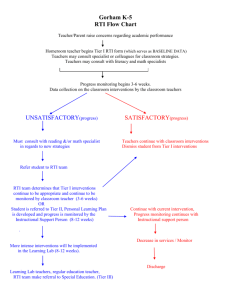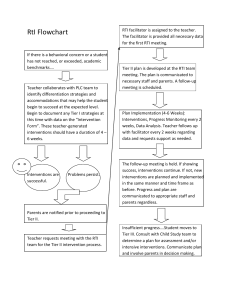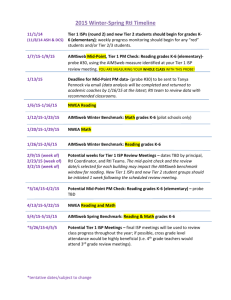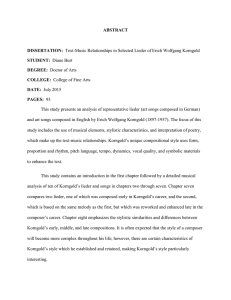SFHS Letterhead - Forsyth County Schools
advertisement
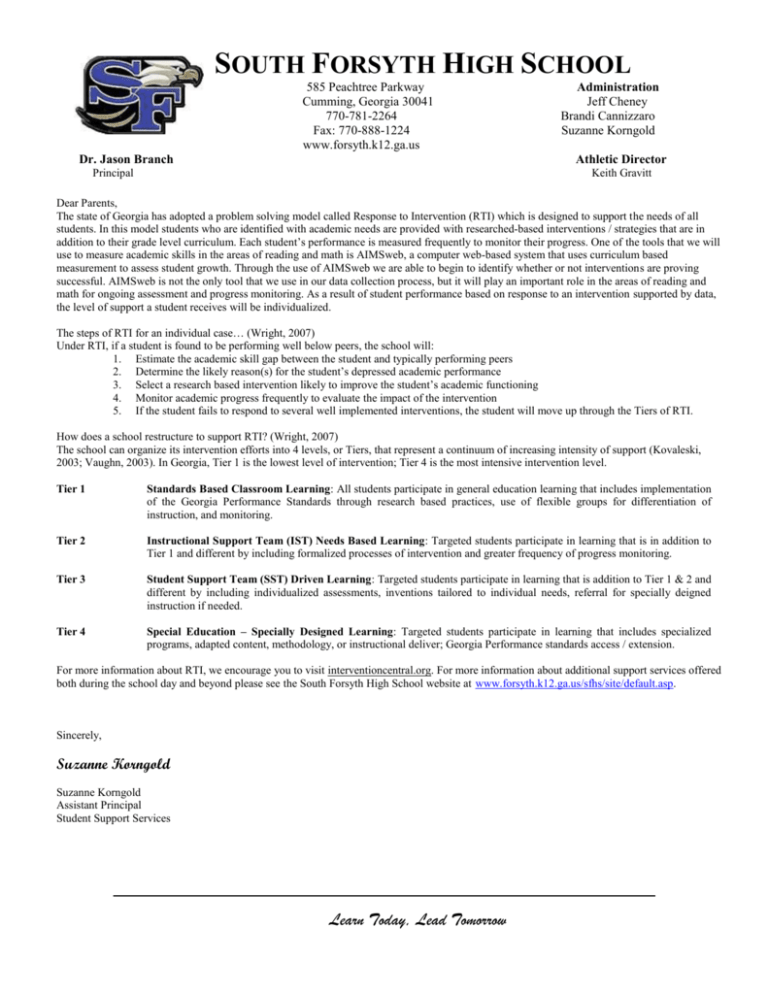
SOUTH FORSYTH HIGH SCHOOL 585 Peachtree Parkway Cumming, Georgia 30041 770-781-2264 Fax: 770-888-1224 www.forsyth.k12.ga.us Dr. Jason Branch Administration Jeff Cheney Brandi Cannizzaro Suzanne Korngold Athletic Director Principal Keith Gravitt Dear Parents, The state of Georgia has adopted a problem solving model called Response to Intervention (RTI) which is designed to support the needs of all students. In this model students who are identified with academic needs are provided with researched-based interventions / strategies that are in addition to their grade level curriculum. Each student’s performance is measured frequently to monitor their progress. One of the tools that we will use to measure academic skills in the areas of reading and math is AIMSweb, a computer web-based system that uses curriculum based measurement to assess student growth. Through the use of AIMSweb we are able to begin to identify whether or not interventions are proving successful. AIMSweb is not the only tool that we use in our data collection process, but it will play an important role in the areas of reading and math for ongoing assessment and progress monitoring. As a result of student performance based on response to an intervention supported by data, the level of support a student receives will be individualized. The steps of RTI for an individual case… (Wright, 2007) Under RTI, if a student is found to be performing well below peers, the school will: 1. Estimate the academic skill gap between the student and typically performing peers 2. Determine the likely reason(s) for the student’s depressed academic performance 3. Select a research based intervention likely to improve the student’s academic functioning 4. Monitor academic progress frequently to evaluate the impact of the intervention 5. If the student fails to respond to several well implemented interventions, the student will move up through the Tiers of RTI. How does a school restructure to support RTI? (Wright, 2007) The school can organize its intervention efforts into 4 levels, or Tiers, that represent a continuum of increasing intensity of support (Kovaleski, 2003; Vaughn, 2003). In Georgia, Tier 1 is the lowest level of intervention; Tier 4 is the most intensive intervention level. Tier 1 Standards Based Classroom Learning: All students participate in general education learning that includes implementation of the Georgia Performance Standards through research based practices, use of flexible groups for differentiation of instruction, and monitoring. Tier 2 Instructional Support Team (IST) Needs Based Learning: Targeted students participate in learning that is in addition to Tier 1 and different by including formalized processes of intervention and greater frequency of progress monitoring. Tier 3 Student Support Team (SST) Driven Learning: Targeted students participate in learning that is addition to Tier 1 & 2 and different by including individualized assessments, inventions tailored to individual needs, referral for specially deigned instruction if needed. Tier 4 Special Education – Specially Designed Learning: Targeted students participate in learning that includes specialized programs, adapted content, methodology, or instructional deliver; Georgia Performance standards access / extension. For more information about RTI, we encourage you to visit interventioncentral.org. For more information about additional support services offered both during the school day and beyond please see the South Forsyth High School website at www.forsyth.k12.ga.us/sfhs/site/default.asp. Sincerely, Suzanne Korngold Suzanne Korngold Assistant Principal Student Support Services Learn Today, Lead Tomorrow

